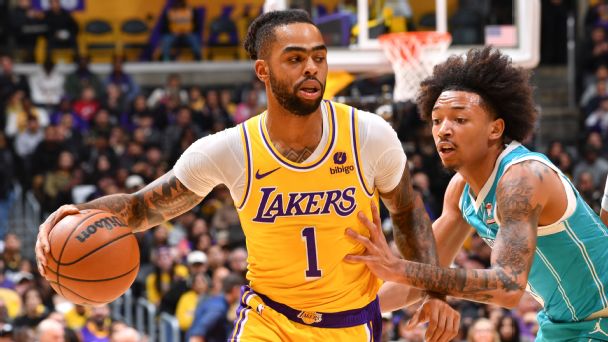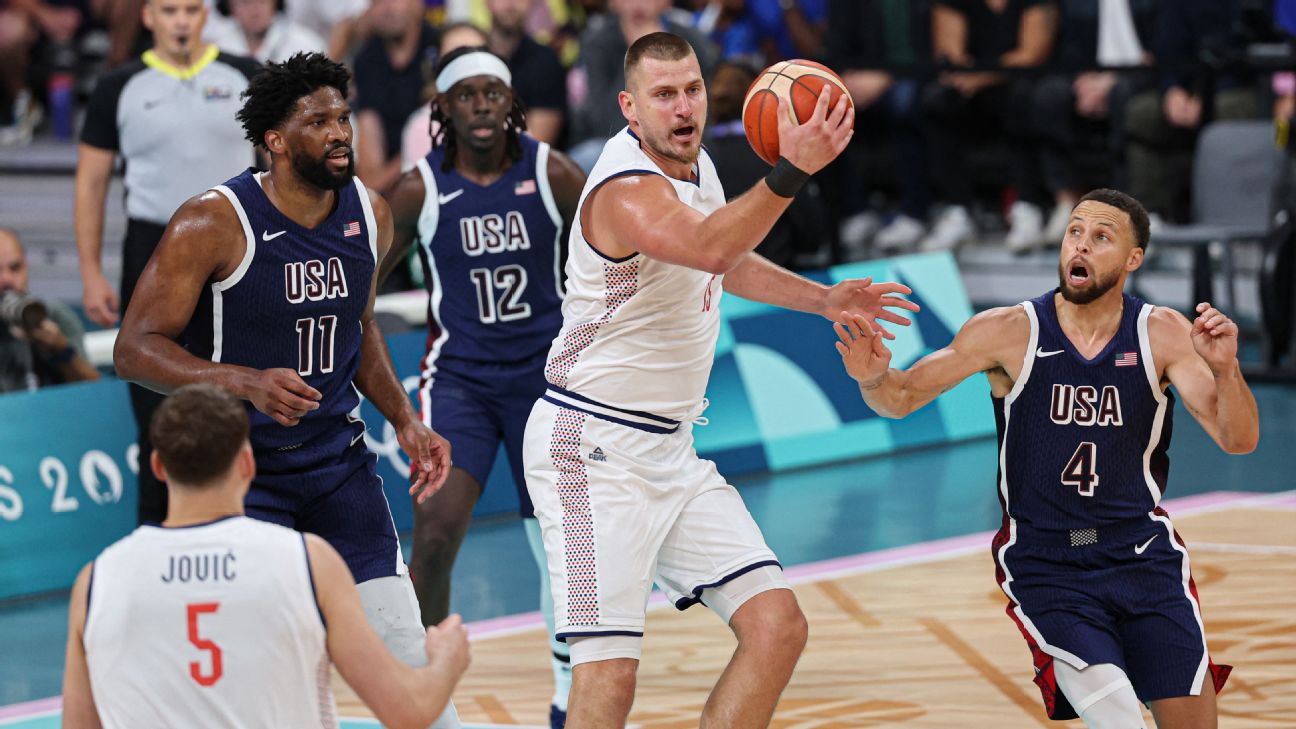The LA Clippers got ahead of the trade deadline by acquiring James Harden from the Philadelphia 76ers in November. After getting off to a slow start with Harden in the fold, Ty Lue’s squad has established itself as one of the top contenders in the Western Conference.
Now it’s time for the rest of the conference to make moves as the 2024 NBA trade deadline on Feb. 8 approaches.
To help get you ready, we’ve broken down what to watch for all 15 teams in the Western Conference: What kind of moves they can make, what we’re hearing, front office trade histories and trade restrictions to note.
We’ve also identified one trade we would like to see from each team between now and the deadline.
In case you missed it, our guide to the Eastern Conference was published Tuesday.
Note: Teams have $7.0 million cash to send out and receive in trades unless otherwise noted.
MORE: Roster breakdown | Draft assets | Full trade deadline coverage

Dallas Mavericks
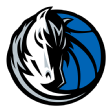
Trade meter: 5
What to watch: Health and power forward
In a period of a year, Dallas reshaped its roster, adding Kyrie Irving, Seth Curry, Dante Exum, Grant Williams, Derrick Jones Jr., Markieff Morris , Dereck Lively II, Olivier-Maxence Prosper and Richaun Holmes.
The new additions have helped the Mavericks go from a team that missed the play-in last season to a team contending for a top-6 seed in the Western Conference.
How Dallas takes the next step is contingent on two factors: health and upgrading the power forward position.
The Mavericks rank 14th among all teams in total missed games to injury and have rolled out 24 different starting lineups this season. Irving, Josh Green and Maxi Kleber have missed double-digit games. Luka Doncic and Irving have played a total of 22 games together.
Grant Williams started the first 26 games before he was moved to the bench on Christmas Day. Jones, who replaced Williams as the starting power forward, has started 40 of the 41 games he has played, splitting time between the two forward spots.
Both players, along with a healthy Kleber, give Dallas depth and options coach Jason Kidd can use. But is that good enough to defend against the likes of Karl-Anthony Towns, Aaron Gordon, Kawhi Leonard, Jalen Williams, and Kevin Durant in a playoff series?
The options to upgrade the power forward position are limited. The Mavericks have one first-round pick to trade (in either 2026 or 2027), two-second round picks and role players (Williams, Kleber and Holmes). Tim Hardaway Jr. is a candidate for Sixth Man of the Year, and he is not going anywhere. Neither should Prosper, one of two first-round picks the team added this season. Dallas does have guard Jaden Hardy, but the 2022 second-round pick has been inconsistent this season. Plus, he is on a team-friendly contract ($1.7 million and $2 million) for the next two years.
Front office trade history: General manager Nico Harrison has completed two blockbuster trades in back-to-back deadlines. In 2022, Dallas traded Kristaps Porzingis to Washington for Spencer Dinwiddie and Davis Bertans. Last year, Dinwiddie, Dorian Finney-Smith and a package of draft assets, were traded to Brooklyn for Irving.
Last regular-season trade: Traded Dinwiddie, Finney-Smith, a 2029 first-round pick and two seconds to Brooklyn for Irving and Morris.
Trade we would like to see: It is hard to see Dallas getting in on Portland’s Jerami Grant unless it is willing to give up Prosper. Even if Prosper was included, the Mavericks would still need to trade Holmes, Williams and Kleber to make the money work. Let’s go with a smaller deal and send Richaun Holmes and a 2026 second-round pick (via Miami) to the Clippers for P.J.Tucker.
Trade exceptions: $5.0 million
Cash available: $6.9 million (out) | $7.0 million (receive)
Salary info and restrictions
-
Dallas is $3.6 million below the luxury tax. The Mavericks are $8.5 million below the first apron and cannot exceed the threshold.
-
Doncic and Irving have 15% trade bonuses. Doncic’s bonus is voided because it exceeds the maximum salary allowed. Irving’s bonus as of Feb. 8 is $8.1 million.
-
Morris has a one-year Bird restriction and can veto any trade.
-
Green has a poison-pill restriction. For trade purposes, $4.7 million is used as his outgoing salary and he would count as $11.4 million in incoming salary for an acquiring team.
Draft assets
-
The Mavericks owe New York a top-10 protected first in 2024 or 2025.
-
They are allowed to trade a first but only two years after the pick to New York is conveyed. The earliest is 2026, and it cannot have protection that extends past 2027.
-
Dallas will send Brooklyn an unprotected first in 2029.
-
The Mavericks can trade swap rights on firsts in 2026, 2027 or 2028.
-
The Spurs have the right to swap firsts in 2030.
-
Dallas has two second-round picks available to trade.
-
Draft rights: None
Denver Nuggets
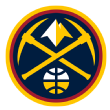
Trade meter: 3
What to watch: The buyout options
We circled the Nuggets’ bench before the start of the season, wondering if one of their young players would be traded to fill a need as the deadline approached.
Reggie Jackson, Christian Braun, DeAndre Jordan returned and veteran Justin Holiday was signed, but Denver lost two key contributors in Bruce Brown and Jeff Green to free agency. A third, Vlatko Cancar, tore his left ACL and is out for the season.
The bench turnover left coach Michael Malone with young reserves Peyton Watson, Julian Strawther, Zeke Nnaji, Jalen Pickett and Hunter Tyson. Pickett and Hunter have spent most of the season in the G League, but Watson, Strawther and Nnaji have contributed. Those five players are under contract through at least the next three seasons and that is important because Denver is restricted in how they add to their roster. Nnaji signed an extension and is eligible to be traded even with a poison-pill restriction in his contract.
If Denver becomes active after the deadline once veterans are bought out, it will need to waive a player. Cancar is out for the season but has a $2.3 million team option next season. Because of their finances, Cancar is valuable to the Nuggets next season.
The Nuggets are also not allowed to sign a player waived during the season who had a preexisting salary in 2023-24 greater than $12.4 million.
Front office trade history: General manager Calvin Booth has made five trades, acquiring starter Kentavious Caldwell-Pope and the draft rights to Watson, Pickett, Strawther and Tyson.
Last regular-season trade: As part of a four-team five player trade with the LA Clippers, Los Angeles Lakers and Orlando Magic, the Nuggets traded Bones Hyland and a second-round pick for Thomas Bryant.
Trade we would like to see: A 2026 second-round pick to Memphis for Xavier Tillman Sr. The Nuggets would use the $2.2 million Bones Hyland trade exception that was created last February. However, to open up a roster spot Denver would need to waive Cancar or include him in the trade.
Trade exceptions: $2.2 million and $1.9 million
Cash available: $7.0 million (out) | $7.0 million (receive)
Salary info and restrictions
-
Denver is $12.6 million over the luxury tax. The Nuggets are projected to pay a franchise-high $22.7 million tax penalty.
-
The Nuggets are $5.7 million below the second apron and cannot exceed the threshold.
-
Jordan has a one-year Bird restriction and can veto any trade.
-
Nikola Jokic’s 15% trade bonus is voided because it exceeds the maximum salary.
-
Nnaji has a poison-pill restriction. For trade purposes, $4.3 million is used as his outgoing salary and $7.2 million in incoming salary for an acquiring team.
Draft assets
-
Denver can trade its 2024 first-round pick but only on the night of the draft.
-
The Nuggets can trade swap rights on their 2024 first now.
-
The Nuggets owe Orlando a first-round pick that is top-five protected in 2025, 2026 and 2027.
-
They owe Oklahoma City a first-round pick that will convey two years after the pick to the Magic conveys. That pick is top-5 protected.
-
Denver will send an additional first to the Thunder, two years after the original first is conveyed. The pick is top-five protected.
-
Denver has three second-round picks available to trade.
-
Draft rights: Ismael Kamagate.
Golden State Warriors
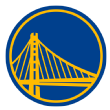
Trade meter: 8
What to watch: Future finances and Chris Paul
How active Golden State is at the deadline will come down to three things:
How much is owner Joe Lacob willing to spend in the future?
Is this roster good enough to be “pushed over the top” by a one-year star rental, if one becomes available?
What is the long-term plan?
Not including the $30 million non-guaranteed salary of Paul, the Warriors have $144 million in salary next season, and that does not take into consideration free agent Klay Thompson. Projections for 2024-25 have the luxury tax at $172 million, the first apron at $179.4 million and the second apron at $190 million.
It does not take a math major to figure out Golden State will exceed the luxury tax and both aprons if Thompson re-signs, and Paul is retained or traded for a salary that extends into next season. Paul broke his left hand and is out for an extended period of time. He is still considered valuable in trades because a team acquiring him has no salary obligation past this season.
Besides trading Paul, one avenue is to try to dump Andrew Wiggins’ salary on a team with expiring contracts. Wiggins is owed $85 million over the next three years. Golden State could duck the second apron next season, re-sign Thompson and still keep Paul as a trade asset.
Exceeding the second apron next season restricts Golden State from aggregating contracts or sending out cash in a trade. For example, Golden State would not be allowed to aggregate Paul’s contract with additional salary in the offseason to acquire someone making significantly more money. As a second-apron team, the Warriors also wouldn’t have the $5 million taxpayer midlevel exception. Starting in 2025-26, the Warriors would not be allowed to trade their 2032 first-round pick as well.
Re-signing Thompson and then waiving Paul in the offseason (he has a June 28 guaranteed date) would likely put Golden State in the luxury tax and close to the first apron. Similar restrictions would still apply, but to a lesser degree.
Considering that Stephen Curry is continuing to play at an All-NBA level and has two years left on his contract (he is also eligible to sign a one-year extension in the offseason), the goal for Golden State is to put the best supporting cast around him, even if that means an open checkbook and stringent roster rules in the future.
Golden State’s ownership has paid $687 million in tax penalties since 2015-16, including a projected record high $186.3 million this season.
“We are going to win no matter what,” Lacob said last May. “I don’t care what the rules are. We are going to figure out a way to do it. That’s what good organizations do. They figure out a way to win the game. And our game is to win games and to win championships.”
Front office trade history: Mike Dunleavy Jr. has been part of the Warriors’ front office since 2018, but this is his first trade deadline in charge. He has made two trades since June, including trading Jordan Poole in a deal that landed Paul.
Last regular-season trade: Acquired Gary Payton II as part of a four-team trade with Atlanta, Portland and Detroit. The Warriors sent James Wiseman and two second-round picks to the Pistons.
Trade we would like to see: Wiggins and Cory Joseph to Detroit for Alec Burks and Monte Morris.
Trade exceptions: $2.3 million and $1.3 million.
Cash available: $7.0 million (out) | $7.0 million (receive)
Salary info and restrictions
-
Golden State is $41.7 million over the luxury tax. The Warriors are projected to pay a league record $186.3 million tax penalty
-
Curry, Thompson and Draymond Green have 15% trade bonuses. Curry’s bonus is voided because it exceeds the maximum salary allowed. As of Feb. 8, Green’s bonus is $8.8 million and Thompson’s is $2.5 million.
-
Golden State is not allowed to sign a player waived during the season who had a preexisting salary in 2023-24 greater than $12.4M.
Draft assets
-
Golden State owes Portland a top-four protected first in 2024. It is top-one protected in 2025 and unprotected in 2026.
-
The earliest the Warriors can trade a first is in 2026. The maximum firsts they could have to trade is two (2026 and 2028).
-
They also owe Washington a top-20 protected first in 2030.
-
Golden State can trade swap rights on picks in 2027, 2028, 2029 and 2030 (if 1-20).
-
The Warriors have three second-round picks available to trade.
-
Draft rights: Justinian Jessup and Cady Lalanne.
Houston Rockets
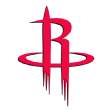
Recent transaction: Traded Victor Oladipo, 2024 Oklahoma City second, more favorable of 2024 Golden State second (if 31-55) and Brooklyn second (if 31-54) and more favorable of 2025 Oklahoma City second or own to Memphis for Steven Adams
Trade meter: 5
What to watch: Jae’Sean Tate, Jock Landale and draft assets
The addition of Steven Adams now gives the Rockets a backup center for Alperen Sengun. Unfortunately, Houston will have to wait until the 2024-25 season with Adams out with a knee injury this season.
The trade cost Houston three second-round picks and cap flexibility next season. However, the Rockets still have the contracts of Tate and Landale to use in a trade. Tate has a $7.0 million team option next season and Landale’s $8 million contract is non-guaranteed in 2024-25.
The trade rules in the new collective bargaining agreement have expanded, giving the Rockets more flexibility to trade both players and bring back a player earning $22 million. Houston cannot trade its own first-round pick until 2028 but does have unprotected firsts from Brooklyn in 2024 and 2026. The Rockets would have the option of adding protection to those picks if they traded them. They also have five second-round picks available.
The Rockets rank in the bottom 10 in offensive efficiency, 19th in offensive rebounding percentage, 23rd in points per game and 21st in second chance points this season. Their bench ranks 24th in points per game.
Front office trade history: General manager Rafael Stone has made eight regular-season trades, including back-to-back deals at the past two deadlines. In total, he has been part of 22 trades since taking over in 2020.
Last regular-season trade: Besides the Adams trade, the Rockets were part of a three-team, four-player trade that saw them acquire John Wall, Danny Green and the right to swap the Bucks’ 2023 first-round pick with the LA Clippers. Both players were eventually waived, but Houston moved up 10 slots in the draft via the swap, selecting Cam Whitmore.
Trade exceptions: $4.5 million
Cash available: $7.0 million (out) | $7.0 million (receive)
Salary info and restrictions
-
The Rockets are $18.9 million below the luxury tax.
-
Fred VanVleet has a 15% trade bonus that is voided because it exceeds the maximum salary allowed.
-
Adams cannot be aggregated in an additional trade.
Draft assets
-
The Rockets owe Oklahoma City a top-four protected first in both 2024 and 2026.
-
The Thunder have the right to swap firsts in 2025 if Houston’s falls outside of the top-10.
-
The Rockets are allowed to trade their own first starting in 2028.
-
The Rockets have two unprotected firsts from the Nets in 2024 and 2026.
-
They also have the rights to swap firsts with Brooklyn in 2025 and 2027.
-
Houston has four second-round picks available to trade.
-
Draft rights: Alpha Kaba.
LA Clippers

Trade meter: 5
What to watch: P.J. Tucker
The Clippers got a head start to the trade deadline when they acquired James Harden on Nov. 1.
Since the trade, the Clippers have gone 25-12 (25-7 since Russell Westbrook elected to come off the bench) and moved into the top four of the Western Conference.
While the addition of Harden has given the Clippers a championship boost, Tucker, his teammate in Houston and Philadelphia, has not found a role, averaging his fewest minutes per game (14.4) since his rookie year in 2006-07. He has not played since Nov. 29.
The logical thing, outside of looking for a trade, is to entertain a buyout once the deadline passes. However, Tucker has an $11 million player option next season, and it would not make sense financially for the Clippers to take on a significant cap hit by buying him out. The team is likely a luxury tax team once again if Harden and Paul George re-sign in the offseason.
At this stage of his career, Tucker is a $3 million player, and it is hard to see him giving back $12 million out of the $15.5 million that is owed to him as of Feb. 8. The 38-year-old still has value, but the obstacle for playoff teams like Milwaukee, Phoenix and even Boston is sending back enough salary to fit within 110% of Tucker’s $11 million salary.
Front office trade history: Lawrence Frank and the Clippers’ front office have been active at the trade deadline. Since 2018, the team has made 13 trades on or the week of the deadline.
Last regular-season trade: The Harden trade. Last February, the Clippers acquired Mason Plumlee, Eric Gordon and Bones Hyland in three separate trades. The trades cost the team a 2023 first-round pick swap, three seconds and a future second-round pick swap.
Trade we would like to see: Tucker and a 2030 first-round pick (top-12 protected) to the Wizards for Deni Avdija. To make the money work, Washington will send Anthony Gill and cash to Portland.
Trade exceptions: None
Cash available: $2.7 million (out) | $7.0 million (receive)
Salary info and restrictions
-
The Clippers are $34.8 million over the luxury tax. They are projected to pay a franchise-high $142.3 million tax penalty.
-
Leonard cannot be traded because he signed an extension.
-
Joshua Primo and Daniel Theis cannot be traded because they signed after Nov. 8.
-
Plumlee and Westbrook have one-year Bird restrictions and can veto any trade.
-
LA is not allowed to sign a player waived during the season who had a preexisting salary in 2023-24 greater than $12.4M.
Draft assets
-
The Clippers owe their 2024 and 2026 first-round picks to Oklahoma City.
-
The Thunder have the right to swap firsts in 2025 and 2027.
-
The Clippers owe Philadelphia a 2028 first-round pick.
-
The 76ers also have the right to swap firsts in 2029 if the Clippers’ pick is outside the top three.
-
The Clippers are allowed to trade their 2030 first (they can also trade swap rights on it).
-
The Clippers have two second-round picks available to trade.
-
Draft rights: Balsa Koprivica and Luka Mitrovic.
Los Angeles Lakers
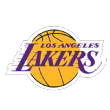
Trade meter: 9
What to watch: Rob Pelinka
The Lakers general manager has turned over and tweaked the roster over the past 12 months. Out of the 14 players on the Lakers roster in December 2022, only LeBron James, Anthony Davis, Austin Reaves and Max Christie remain.
That period of time has seen Los Angeles go from the play-in tournament to the Western Conference finals and now back to competing for one of the final play-in spots.
This underachieving season is a byproduct of many things, including injuries (seventh in missed games), a lack of roster continuity (13 different starting lineups) and an offense that ranks 21st in efficiency. According to Second Spectrum tracking, Los Angeles ranks in the bottom 10 in half-court points per possession.
How the Lakers turn their season around is based on whether they have patience in the current team or believe that Pelinka once again needs to change parts of the roster.
The latter is difficult but not impossible.
When the Lakers traded Russell Westbrook last February the goal was to balance the roster and become less top-heavy. Los Angeles now has 13 players earning between $1.1 and $17.3 million.
Because of the new collective bargaining agreement, roster building is more of a challenge with three players on max contracts, which the Lakers would have if they traded for Zach LaVine. To acquire him from the Bulls, the Lakers would need to trade at least three players and also remain below the $172.3 million first apron. They are currently $4.9 million below.
The counterargument is that the Lakers could be a second apron team in the offseason, and this could be the last time to chase a star player. Los Angeles has $179 million in committed salary and is $11.5 million below the second apron. Teams over the second apron are not allowed to trade multiple players for one and cannot take back more salary than the amount sent out. Unfortunately, there are no star players available at this deadline to risk paying a punitive penalty next year.
Still, outside of James, Davis and Reaves, is there a player on the roster who would be desired by other teams in a trade, without the Lakers having to attach a draft pick? That narrative changes in the unlikely scenario that Reaves is made available, but he is the Lakers’ third-best player and does not become a free agent until 2027. He is also owed a $5 million trade bonus if he is moved.
Jarred Vanderbilt cannot be traded, as he signed an extension in the offseason. Gabe Vincent recently underwent knee surgery and is out for an extended period of time. He has $22.5 million in guaranteed salary after this season. That leaves the Lakers with D’Angelo Russell, Rui Hachimura, Taurean Prince and recent draft picks Christie, Jalen Hood-Schifino and Maxwell Lewis. They also have three players on veteran minimum contracts: Christian Wood, Jaxson Hayes and Cam Reddish.
Russell, the starting point guard when the season started, was moved to the bench and is now starting again. He has an $18.7 million player option for next season. Hachimura is on pace to play fewer than 65 games for a fifth straight season. He has $35 million owed to him after this season and can help a team when he is on the court, plus his contract fits into how teams will build their roster into the future.
Out of the group, Christie and Hood-Schifino have the most value because they are on controllable contracts. Christie is on an expiring contract but will likely become a restricted free agent in the offseason. Hood-Schifino is in the first year of a four-year rookie contract. The two players earned a combined $5.4 million this season.
The Lakers are also $1.2 million above the luxury tax and can get under by trading a player like Jaxson Hayes.
Front office trade history: This is the fifth trade deadline for Pelinka since taking over in 2019. Pelinka has been part of four regular-season trades, three last January and February. The Lakers reshaped their roster acquiring Hachimura, Russell, Vanderbilt, Malik Beasley, Mo Bamba and Davon Reed.
Last regular-season trade: As part of a three-team, eight-player trade, the Lakers acquired Russell, Beasley and Vanderbilt. They sent out a 2027 top-four protected first, Russell Westbrook, Damian Jones and Juan Toscano-Anderson.
Trade we would like to see: Three different trades that involve D’Angelo Russell. Dorian-Finney Smith, Spencer Dinwiddie from Brooklyn for Russell, Rui Hachimura and 2029 first (top-14 protected). Or Russell, Hood-Schifino and a 2029 top-eight protected first to Atlanta for Dejounte Murray. And finally, Russell and Prince to Brooklyn, Diwniddie to Toronto and Bruce Brown to the Lakers. As part of the trade, Toronto would receive a 2025 Lakers second, 2030 Lakers second and Brooklyn would receive a 2025 LA Clippers second.
Trade exceptions: $2.7 million, $2.3 million and $1.8 million
Cash available: $7.0 million (out) | $7.0 million (receive)
Salary info and restrictions
-
The Lakers have an open roster spot and are $1.26 million over the luxury tax.
-
Los Angeles is $4.9 million below the hard cap.
-
The Lakers are a repeater tax team (fourth year in a row) and projected to pay a $3.1 million penalty.
-
Davis can be traded starting Feb. 6.
-
Vanderbilt cannot be traded, because he signed an extension in September.
-
Davis, James and Reaves have 15% trade bonuses. The bonus for James is voided because it exceeds the maximum salary allowed. As of Feb. 8, the bonus for Davis is $12.5 million, and Reaves’ is $4.7 million.
-
Because the Lakers are below the first apron, they are allowed to sign a player waived during the regular season even if his original salary was more than $12.4 million.
Draft assets
-
The Lakers owe New Orleans a 2024 unprotected first. The Pelicans can defer the pick to 2025.
-
They will send a 2027 top-four protected first to Utah.
-
The Lakers are allowed to trade first-round picks in 2029 or 2030. They cannot trade both.
-
Los Angeles also has the ability to trade swap rights on its first-round picks in 2026, 2028, 2029 and 2030.
-
They have four second-round picks available to trade.
-
Draft rights: Louis Labeyrie.
Memphis Grizzlies

Recent transaction: Traded Steven Adams to Houston for Victor Oladipo, more favorable of 2024 Golden State second (if 31-55) or Brooklyn second (if 31-55), 2024 Oklahoma City second and more favorable of 2025 Oklahoma City or Houston second
Trade meter: 5
What to watch: Steven Adams, Kennard, Derrick Rose and Jake LaRavia. Those six players missed at least five games, and Adams and Clarke have not played yet this season. As a result, Memphis ranked No. 1 by a wide margin in missed games.
Then Morant returned and Smart was healthy, and the Grizzlies resembled their playoff teams from past years. Memphis had impressive wins against New Orleans (twice), Indiana, the Lakers and Phoenix — all without Morant.
In all likelihood Memphis is not going to reach the postseason, especially in light of Morant’s season-ending shoulder surgery. But that doesn’t mean that the roster should be torn down. The core four of Morant, Smart, Desmond Bane and Jaren Jackson Jr. has given Memphis belief that this team can return to the playoffs next season. The Grizzlies will also likely add a lottery pick in June.
But with Bane’s extension set to kick in next season and a likely lottery pick, the Grizzlies will be a luxury tax and first apron team if they keep Kennard, who has a $14.8 million team option. The easy solution is to decline the option and duck under the tax, especially since Kennard has been injured for most of the season. However Memphis could view him as valuable in trades, since teams looking to acquire him would have no salary obligation past this season. But would Memphis be willing to take back a player in a Kennard trade who had salary that extended into next season?
The Grizzlies could also go in a different direction and look to move Xavier Tillman and John Konchar for draft picks. Tillman is on an expiring contract and Konchar has averaged 16 minutes this season. Konchar is under contract through 2026-27 and is an insurance policy if Kennard’s option is declined.
Front office trade history: Zach Kleiman has made 26 trades but only four during the regular season.
Last regular-season trade: Besides the recent Oladipo trade, acquired Kennard from the Clippers as part of a three-team, four player trade. The Grizzlies sent Danny Green to Houston and two second-round picks to the Clippers
Trade we would like to see: Kennard to Orlando for Gary Harris and two seconds.
Trade exceptions: $12.6 million and $7.5 million
Cash available: $7.0 million (out) | $7.0 million (receive)
Salary info and restrictions
-
Memphis is $12.3 million below the luxury tax.
-
Bane has a poison-pill restriction. For trade purposes, $3.8 million is used as his outgoing salary and $33.5 million in incoming salary for an acquiring team.
-
Morant has a 15% trade bonus. The bonus is voided because it exceeds the maximum salary allowed.
-
Oladipo cannot be aggregated with another contract.
Draft assets
-
The Grizzlies have their own firsts in the next seven years.
-
Memphis has the right to swap its own 2024 first for the less favorable of Phoenix’s first and Washington’s first (if not conveyed to New York).
-
The Grizzlies also have the right to swap their 2030 first for the less favorable of the Suns’ first and Wizards’ first.
-
Memphis has five second-round picks available.
-
Draft rights: Tarik Biberovic and Vanja Marinkovic.
Minnesota Timberwolves

Trade meter: 3
What to watch: Backup point guard
What a difference a year makes. Unlike last season when the Timberwolves swapped D’Angelo Russell for Mike Conley, there are no sweeping changes needed to the roster. Minnesota has a championship-level roster that can go 10-deep.
If there is a tweak needed, it would be to identify a reserve lead guard who can help facilitate and control pace. The challenge comes with the lack of trade assets Minnesota has available. The Wizards’ Tyus Jones would be an example, but the Timberwolves are not allowed to trade a first-round pick (they do have four seconds) and would also have to sacrifice a combination of Kyle Anderson, Shake Milton, Nickeil-Alexander Walker and Troy Brown in a trade.
The Timberwolves are $2.4 million below the luxury tax and are projected to exceed the threshold next year.
Front office trade history: Including his tenure in Denver, Tim Connelly has been part of 16 trades during the regular season. In 2021, the Nuggets acquired forward Aaron Gordon. Last February, Minnesota traded for Conley.
Last regular-season trade: Acquired Conley, Alexander-Walker and two second-round picks from Utah. The Wolves sent out D’Angelo Russell as part of the three-team trade.
Trade we would like to see: Jordan McLaughlin, Josh Minott and a 2030 second-round pick to Sacramento for Davion Mitchell.
Trade exceptions: $3.7 million
Cash available: $7.0 million (out) | $7.0 million (receive)
Salary info and restrictions
-
Minnesota is $2.4 million below the luxury tax. The Timberwolves are $7.8 million below the first-apron.
-
Karl-Anthony Towns has a 5% trade bonus. As of Feb. 8, the bonus is $4.8 million.
-
Anthony Edwards and Jaden McDaniels have poison-pill restrictions in their contract. For trade purposes, McDaniels counts as $3.9 million in outgoing salary and $22.5 million in incoming salary for an acquiring team.
Draft assets
-
Minnesota is not allowed to trade a first but can trade swap rights to firsts in 2024, 2028 and 2030.
-
The Timberwolves owe Utah 2025 and 2027 unprotected first-round picks. They will also send the Jazz a 2029 top-five-protected first.
-
Utah also has the right to swap firsts in 2026.
-
The Timberwolves have four second-round picks available to trade.
-
Draft rights: Matteo Spagnolo.
New Orleans Pelicans

Recent transaction: Traded Kira Lewis Jr. and a second-round pick (lesser of New Orleans and Chicago) to Indiana for cash.
Trade meter: 5
What to watch: Open roster spots and Jonas Valanciunas
The Lewis trade relieves a financial burden the Pelicans were facing at the deadline.
New Orleans was projected to pay the tax for the first time in franchise history. Doing so would have seen the Pelicans lose out on a $14 million tax distribution from the NBA.
The trade also opened up an extra roster spot and gave New Orleans a $5.7 million trade exception.
As for the roster, New Orleans has to take a long-term approach when it comes to center Jonas Valanciunas. The 31-year-old has started every game this season (he has missed nine games since 2021-22), averaging 14 points and 9.6 rebounds. Valanciunas is an unrestricted free agent in the offseason, and because the Pelicans are over the cap, they would have only the $12.9 million non-taxpayer midlevel exception to replace. The center position is projected as the weakest among free agents this summer.
The Pelicans do have one of the deeper rosters in the NBA and can stay conservative (outside of staying under the tax) at the deadline, waiting until the offseason to address the futures of Valanciunas and Naji Marshall.
Front office trade history: In his time with the Pelicans, David Griffin has made 15 trades but only four during the regular season. Last February, New Orleans acquired Josh Richardson, and the year before it added CJ McCollum and Larry Nance Jr.
Last regular-season trade: Besides the recent trade with Indiana, New Orleans traded four second-round picks and Devonte’ Graham to San Antonio for Richardson.
Trade we would like to see: Valanciunas, Dyson Daniels and 2025 New Orleans first (top-eight protected) for Jarrett Allen.
Trade exceptions: $5.7 million
Cash available: $7.0 million (out) | $6.9 million (receive)
Salary info and restrictions
-
New Orleans is $2.8 million below the luxury tax.
-
The Pelicans have two open roster spots.
-
Valanciunas and Brandon Ingram have 15% trade bonuses. As of Feb. 8, Ingram’s bonus is $7.4 million and Valanciunas’ is $892K.
Draft assets
-
New Orleans owns all its first-round picks in the next seven years.
-
The Pelicans have an unprotected first from the Lakers in 2024. That pick can be deferred to 2025.
-
The Pelicans also have a first from Milwaukee in 2025 (if 1-4) and an unprotected first in 2027.
-
They have the right to swap firsts with the Bucks in 2024 and 2026.
-
New Orleans has one second-round pick available to trade.
-
Draft rights: Karlo Matkovic
Oklahoma City Thunder
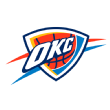
Trade meter: 4
What to watch: Patience, frontcourt depth and draft assets
Before the season, executive vice president and general manager Sam Presti gave his annual state of the team, addressing the upcoming season.
“I’m not trying to dismiss everyone’s excitement, but we’re not a .500 team,” he said at the time. “We have to finish our breakfast before we start acting like we’re on the cusp of something.”
Six months later, Oklahoma City is better than a .500 team and a threat to come out of the Western Conference, but exceeding expectations comes with a caution flag.
Oklahoma City has up to 11 tradable firsts (the Thunder have a total of 14) and an additional 21 second-rounders. The overflow of draft picks, however, does not mean Oklahoma City should look for a star at the deadline. Why not let the youngest roster in the NBA get a playoff series under its belt and then address what is needed in the offseason?
If there is a need, it would be to add frontcourt help to combat the Nuggets, Lakers and Timberwolves in the playoffs.
The Thunder rank 29th in defensive rebounding and rebounding percentage. They also rank 29th in second-chance points.
Oklahoma City has the expiring contract of Aleksej Pokusevski ($5 million) as well as guard Tre Mann ($3.2 million) to dangle in any trade packages. Mann has played a career-low 8.5 minutes and is buried on a deep Thunder team. He has another year left on his contract after this season.
Front office trade history: Presti has been part of 94 trades since 2007. In the past three regular seasons, the Thunder have made seven trades, acquiring seven second-round picks. They also agreed to amend the first-round pick protection from prior deals with Utah and Miami.
Last regular-season trade: Traded Mike Muscala to Boston for Justin Jackson and two second-round picks. The Thunder also traded Darius Bazley to Phoenix for Dario Saric and a 2029 second.
Trade we would like to see: Davis Bertans, 2028 first-round pick (top-10 protected), 2024 second-round pick (via Houston) and a 2025 second-round pick (via Philadelphia) for Daniel Gafford.
Trade exceptions: None
Cash available: $5.8 million (out) | $5.9 million (receive)
Salary info and restrictions
-
Oklahoma City is $12.3 million below the luxury tax.
-
Shai Gilgeous-Alexander has a 15% trade bonus. As of Feb. 8, the bonus is $2.5 million.
Draft assets
-
The Thunder have their own first-round picks in the next seven years and the possibility of an additional seven firsts.
-
In 2024, Oklahoma City has a top-five-protected first from Houston, unprotected first from the Clippers and a top-10-protected first from Utah. The least favorable of their own, Rockets, Clippers and Jazz will go to the Toronto Raptors.
-
In 2025, the Thunder have a top-10-protected first from Utah, top-14-protected first from Miami and top-six-protected first from Philadelphia. They also have the right to swap firsts with the Clippers or Rockets (if 11-30). The Heat’s first is unprotected in 2026 if not conveyed in the prior season.
-
The least favorable of their own, Rockets (if 5-30) and Clippers will go to Philadelphia in 2026. The 76ers’ first is top-four protected in 2027 if not conveyed in 2025 or 2026.
-
The Thunder also have the right to swap firsts with the Clippers in 2027.
-
And finally, Oklahoma City will receive a top-five-protected first from Denver in 2027, 2028 or 2029. If the first is conveyed in 2027, Oklahoma City will receive a 2029 top-five-protected first from the Nuggets. The pick is top-five protected in 2030 if not conveyed in 2027.
-
The Thunder have 21 second-round picks available to use in a trade.
-
Draft rights: None
Phoenix Suns

Trade meter: 3
What to watch: The trade exceptions and buyouts
The additions of Kevin Durant and Bradley Beal were supposed to put Phoenix in contention for a championship. Instead the Suns are fighting just to get into the playoffs.
The uneven start is a result of injuries, poor bench play and overall lack of continuity. When you have a new head coach in Frank Vogel and then factor in 11 players signed or acquired via trade in the offseason, success early in the season should have been unrealistic. But considering that Phoenix went all-in with its roster and there is no turning back, patience is the Suns’ most valuable trade asset.
The Suns’ roster is top-heavy with Durant, Beal and Devin Booker earning $130 million. They do have three players earning between $6.2 million and $16.9 million (Jusuf Nurkic, Grayson Allen and Nassir Little). But Allen is shooting a career-high 49.1% from 3 and has been one of the Suns’ more consistent players. He is a free agent in the offseason and — despite their financials — they can re-sign him and exceed the second apron. The cost, however, in salary and luxury tax could be as high as a whopping $80 million.
The Suns have two medium-sized trade exceptions ($6.5 million and $5 million) to acquire a player but would need to create a roster spot. Because Phoenix is over the second apron, the trade exceptions go away starting on the first day of the offseason. The Suns are allowed to sign a player waived during the regular season, but only if his preexisting salary was less than $12.4 million.
This is also the last time that Phoenix can send cash (it has $1.3 million available) in a deal or aggregate contracts in trade. What that means is that starting in the offseason, Phoenix would not be allowed to combine the contracts of Nurkic and Little for a player earning $24 million. The Suns are also not allowed to take back more money than sent out starting in the offseason.
Because of the trades with Brooklyn, Washington, Orlando and Memphis, there are no more first-round picks available to move at the deadline. The Suns do have their own 2024 first, but that cannot be traded until the night of the draft. Phoenix has three second-rounders available.
Front office trade history: James Jones and his front office are famous for blockbuster deals. Since November 2020, Phoenix has acquired Chris Paul, Durant and most recently Beal. In total, Jones has made 19 trades, seven since last January.
Last regular-season trade: Traded Mikal Bridges, Cam Johnson, Jae Crowder, four first-round picks and a 2028 pick swap for Durant. The Suns also acquired Darius Bazley from Oklahoma City for Dario Saric and a future second.
Trade we would like to see: Little, Josh Okogie and two second-round picks (2028 and 2029 via Memphis) to Brooklyn for Royce O’Neale and Harry Giles III.
Trade exceptions: $6.5 million, $5.0 million, $1.8 million and $1.1 million
Cash available: $1.3 million (out) | $7.0 million (receive)
Salary info and restrictions
-
The Suns are $21.5 million over the luxury tax. They are projected to pay a franchise-high $50.7 million tax penalty.
-
Beal has a no-trade clause.
-
Okogie and Damion Lee have one-year Bird restrictions. Either player is allowed to veto any trade.
-
Booker has a 15% trade bonus. As of Feb. 8, the bonus is $4.7 million.
-
Phoenix is not allowed to sign a player waived during the season who had a preexisting salary in 2023-24 greater than $12.4M.
Draft assets
-
Phoenix can trade its 2024 first but not until the night of the draft.
-
Washington has the right to swap firsts with Phoenix in 2024 if the Wizards’ first is not conveyed to New York (top-13 protected).
-
The Wizards also have the right to swap firsts in 2026 (if 9-30), 2028 (if 9-30) and 2030.
-
Orlando then has the right to swap its 2026 first with the less favorable of Phoenix and Washington.
-
Memphis has the right to swap the less favorable of Phoenix and Washington in 2030.
-
The Suns owe Brooklyn unprotected firsts in 2025, 2027 and 2029.
-
Brooklyn also has the right to swap firsts with Phoenix in 2028.
-
The Wizards then have the right to swap the least favorable first-round pick of the Nets, Suns and 76ers in 2028.
-
Phoenix has four second-round picks available to trade.
-
Draft rights: None
Portland Trail Blazers
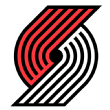
Trade meter: 7
What to watch: Malcolm Brogdon and Jerami Grant
In the 2022 offseason, Portland tried to do the impossible: retool the roster around Damian Lillard. Eighteen months later, the Trail Blazers are rebuilding, but this time around Scoot Henderson, Shaedon Sharpe, Anfernee Simons and the draft equity acquired from the respective trades of Lillard to Milwaukee and Jrue Holiday to Boston.
Leading up to the deadline, Trail Blazers general manager Joe Cronin must weigh how 31-year-old Brogdon and 29-year-old Grant impact the locker room and the on-court product, and whether it’s worth keeping them or trading them for more draft assets.
Both players are under contract past this season (Brogdon through 2024-25 and Grant through 2027-28) and have non-max salaries that make them valuable under the new collective bargaining agreement.
Grant is averaging over 20 points and shooting better than 40% from 3 for a second consecutive season. Meanwhile, Brogdon is averaging just 1.5 turnovers per game this season.
The Trail Blazers have two open roster spots and two trade exceptions valued at $8.8 million and $8.3 million. They also have a $5.8 million Disabled Player Exception that is available to acquire a player in the last year of his contract.
Front office trade history: In a span of two years, Cronin has overhauled the roster, making a total of nine trades, five during the regular season. The Trail Blazers have traded Lillard, Holiday, Jusuf Nurkic, Norman Powell, Josh Hart, Robert Covington, CJ McCollum, Larry Nance Jr., Nassir Little and Gary Payton II. They acquired Grant in the 2022 offseason. The five trades since last February have netted four firsts, five seconds and two first-round pick swaps.
Last regular-season trade: Traded Hart to New York as part of a four-team, six-player deal. The Trail Blazers received a 2023 first (Kris Murray), Cam Reddish and Ryan Arcidiacono.
Trade we would like to see: Brogdon to New York for Evan Fournier and a 2024 first-round pick (top-14 protected).
Trade exceptions: $8.8 million, $8.3 million, $5.8 million (Disabled Player) and $1.5 million
Cash available: $7.0 million (out) | $7.0 million (receive)
Salary info and restrictions
-
Portland is $5.5 million below the luxury tax. The Trail Blazers are $12.6 million below the first apron.
-
Matisse Thybulle has the right to veto any trade and cannot be dealt to Dallas.
-
Thybulle has a 15% trade bonus. As of Feb. 8, the bonus is $2.3 million.
Draft assets
-
The Trail Blazers owe Chicago a top-14-protected first-round pick. The pick’s protection extends to 2028.
-
Portland will receive a 2024 first from Golden State if 5-30. The first is top-one protected in 2025 and unprotected in 2026.
-
The Trail Blazers have unprotected firsts from Boston and Milwaukee in 2029.
-
Portland has the right to swap firsts with Milwaukee in 2028 and 2030. The swap rights in 2028 are extinguished if the Trail Blazers send Chicago their first in that year.
-
The Trail Blazers have five second-round picks available.
-
Draft rights: None
Sacramento Kings
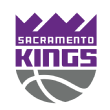
Trade meter: 7
What to watch: The frontcourt
The Kings elected (rightfully so) to not use their cap space to add free agents last summer, instead renegotiating the contract of All-Star Domantas Sabonis, extending Harrison Barnes and re-signing Trey Lyles.
Sacramento ranked No. 1 in offense in 2022-23 but is down to 12th this season. In their 18 losses, the Kings have been outscored by double digits 11 times.
How the Kings approach the deadline should be based on one factor: Has the current roster already peaked with its potential? The answer to that will be easier to evaluate in the offseason after a second consecutive playoff appearance, not in early February. One misguided trade and Sacramento could go from a top-six team to a play-in contender.
Tweaking the roster around Sabonis, De’Aaron Fox and Keegan Murray also comes with a big financial question. Sabonis’ max extension is set to kick in next season. Fox could become eligible to sign a supermax extension this offseason if he earns All-NBA. Murray becomes extension eligible in 2025. Can the roster sustain another $30 million player?
The Kings have balanced their cap ledger with 12 players earning between $2 million to $17 million. The lack of a top-heavy roster gives Sacramento options to combine salaries and swing for the fences, or make a minor move.
One thing to monitor is the future of Malik Monk. The Kings are not going to move off their fourth-best player, despite Monk being a free agent this offseason. However, because he signed a two-year contract, Sacramento is restricted to paying him no more than $17.4 million in the first year of a new contract. Monk is shooting 39.1% from 3 and averages 7.6 minutes in the fourth quarter, the third most on the team.
If Kevin Huerter is deemed expendable, Sacramento would not have another shooting guard on the roster if Monk gets a more lucrative offer in free agency.
Front office trade history: General manager Monte McNair has made 17 trades in his tenure. The highlight was the 2022 deadline when Sacramento acquired Sabonis and Lyles in two separate trades. The Kings have made six trades during the regular season.
Last regular-season trade: Traded $2.6 million in cash to Brooklyn for Kessler Edwards.
Trade we would like to see: Harrison Barnes, Davion Mitchell, a first-round pick (two years after the first to Atlanta is conveyed) and a 2028 second to Portland for Jerami Grant.
Trade exceptions: None
Cash available: $7.0 million (out) | $5.6 million (receive)
Salary info and restrictions
-
Sacramento has an open roster spot.
-
The Kings are $18.4 million below the luxury tax.
-
Barnes has a 15% trade bonus. As of Feb. 8, the bonus is $4.3 million.
Draft assets
-
The Kings can trade swap rights on their own firsts in 2027, 2028, 2029 and 2030.
-
The Kings will send Atlanta a top-14-protected first in 2024. The pick is top-12 protected in 2025 and top-10 protected in 2026.
-
They are allowed to trade a first two years after the pick to Atlanta is conveyed.
-
Sacramento has five second-round picks available to use in a trade.
-
Draft rights: None
San Antonio Spurs

Trade meter: 9
What to watch: Doug McDermott and Cedi Osman
There are two distinct directions the Spurs can go at the deadline.
The first is focusing on finding new homes for McDermott and Osman.
The two veterans are in the last year of their contracts (McDermott at $13.8 million and Osman at $6.7 million) and could help playoff teams looking for bench scoring. McDermott is averaging the fewest minutes (15.5) since his rookie season in Chicago but is a career 41.2% shooter from 3 (44.8% this season). Osman is shooting a career-high 60.6% on 2-pointers.
The Spurs also have the $12.1 million contract of Devonte’ Graham. His $12.7 million salary next season is guaranteed for only $2.8 million. Graham has played in only seven games this season.
The Spurs have a history of turning veterans into trade assets while also taking back money into the following season. Last February, San Antonio traded Jakob Poeltl and Josh Richardson for seven draft picks (one first and six seconds).
The Spurs are projected to have $40 million in room in the offseason.
The second direction would be getting a jump start on the 2024 offseason and identifying which young players on the roster fit around Victor Wembanyama. For example, does Keldon Johnson fit long-term? Johnson has one of the best contracts in the NBA that descends and then stays flat over the last two seasons.
San Antonio has 12 players under contract next season, with Osman, McDermott and Sandro Mamukelashvili the only pending free agents.
Front office trade history: The Spurs started their rebuild in the 2021 offseason when DeMar DeRozan was traded to Chicago. Since the trade, San Antonio has accumulated seven firsts, 19 seconds and three years of first-round pick swaps.
Last regular-season trade: Traded Poeltl to Toronto for Khem Birch, a 2024 top-six-protected first and two seconds. The Spurs also acquired four second-round picks and Devonte’ Graham from New Orleans for Richardson.
Trade we would like to see: McDermott to Orlando for Gary Harris and a 2025 second (least favorable of Boston or Memphis).
Trade exceptions: $1.3 million (Disabled Player Exception)
Cash available: $7.0 million (out) | $320K (receive)
Salary info and restrictions
-
The Spurs are right at the $136 million salary cap.
-
Devin Vassell has a poison-pill restriction. For trade purposes, $5.9 million is used as his outgoing salary and he would count as $23.5 million in incoming salary for an acquiring team.
-
Zach Collins signed an extension in the offseason and cannot be traded.
Draft assets
-
The Spurs have their own first-round pick in the next seven years.
-
They are owed a first-round pick from the Hornets that is top-14 protected in 2024 and 2025.
-
They are owed a first-round pick from the Raptors that is top-six protected in 2024, 2025 and 2026.
-
They are owed a first-round pick from Chicago that is top-10 protected in 2025 and top-eight protected in both 2026 and 2027.
-
The Hawks will send the Spurs unprotected firsts in 2025 and 2027.
-
San Antonio has the right to swap firsts with Atlanta in 2026.
-
In 2028, the Spurs have the right to swap firsts with Boston (top-one protected).
-
They also have the right to swap firsts with Dallas in 2030.
-
The Spurs have 16 second-round picks available to use in a trade.
-
Draft rights: None
Utah Jazz

Trade meter: 7
What to watch: Kelly Olynyk and draft capital
After starting the season 10-17, the Jazz find themselves positioned to contend for one of the final play-in spots.
If that sounds familiar, the Jazz were in the same spot last year but elected to take a step back, trading Mike Conley for a future first-round pick. The difference, however, is that Utah overachieved to start the 2022-23 season and then played .500 basketball in the month of January. The Jazz started this season 10-17 but have a top-six record among all teams since Dec. 21.
The recent play does not mean Utah is ready to cash in the seven firsts acquired in the trades that sent Conley, Donovan Mitchell and Rudy Gobert out of Utah. The Jazz are still in the middle stages of retooling, and one move does not put them closer to Denver, Oklahoma City, Minnesota and the Clippers.
The Jazz will need to weigh the impact Olynyk has on the court against trading him for future draft assets.
Olynyk is shooting a career-high 55.3% from the field and 40.5% on 3-pointers. He is a valuable reserve for the Jazz but is also on an expiring $12.2 million contract. Talen Horton-Tucker is also on an $11 million expiring contract.
Front office trade history: The rebuild that started in the 2022 offseason has resulted in the Jazz receiving nine firsts and three years of pick swaps. Utah has made 10 trades since Danny Ainge took over in December 2021.
Last regular-season trade: Traded Conley to Minnesota as part of a three-team, eight-player trade. The Jazz received a 2027 top-four-protected first, Russell Westbrook, Damian Jones and Juan Toscano-Anderson.
Trade we would like to see: Horton-Tucker, 2029 own second, 2030 own second to Charlotte for Miles Bridges.
Trade exceptions: None
Cash available: $7.0 million (out) | $7.0 million (receive)
Salary info and restrictions
-
The Jazz are right at the $136 million salary cap.
Draft assets
-
The Jazz own 14 first-round picks.
-
The Jazz owe Oklahoma City a top-10-protected first in 2024 (top-10 protected in 2025, top-eight protected in 2026).
-
They have a combined five unprotected firsts (two in 2025, two in 2027 and one in 2029) from Cleveland and Minnesota.
-
The Timberwolves will also send a top-five-protected first in 2029.
-
They have a top-five-protected 2027 first from the Lakers.
-
Utah can swap a first with Minnesota or Cleveland in 2026 (if in the top eight) and with Cleveland in 2028.
-
Utah has two second-round picks available to use in a trade.
-
Draft rights: None
